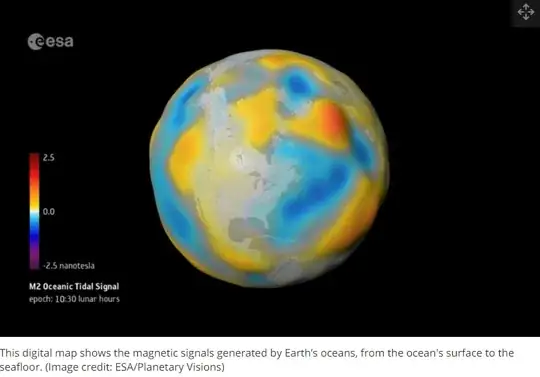The earth's oceans do in fact generate a measurable magnetic field$^{[1][2]}$. As you have already pointed out, the motion of charged particles generate magnetic fields, so it makes sense that the earth’s oceans would do the same. In fact, the oceans make a contribution (albeit a small one) to the Earth's overall magnetic field.
The moving salts within the oceans have electrical charge which means you have electrical currents, and since the oceans move in cycles, the motion of the tides etc., as you pointed out, the oceans contribute to the total magnetic field of the earth.
In the image below, we see how this magnetic field is distributed about the northern hemisphere with the United States and Canada in the center of the sphere, and how its strength varies at different points. The European Space Agency in 2013 launched three satellites, a system called Swarm, which was designed to study the earth's magnetic field in detail and was also used to map the magnetic field emanating from the oceans.

As can be seen, the ocean generated magnetic field is on average $(1 \ \text{to} \ 2)\times 10^{-9}$ Tesla at sea level.
This field goes to roughly $10^{-9}$ Tesla at the height of about a few hundred kilometers, or average satellite height. This means that this magnetic field is about $20,000 \times$ smaller than the Earth's magnetic field ($\approx 40\mu$Tesla) caused by the motion of charged particles in the Earth’s core.
References:
Analysis of Ocean Tide-Induced Magnetic Fields AGU Journals, 08 November 2019.
Ocean Tides and Magnetic Fields A short video by NASA and links therein with other interesting magnetic effects of earth's oceans.
